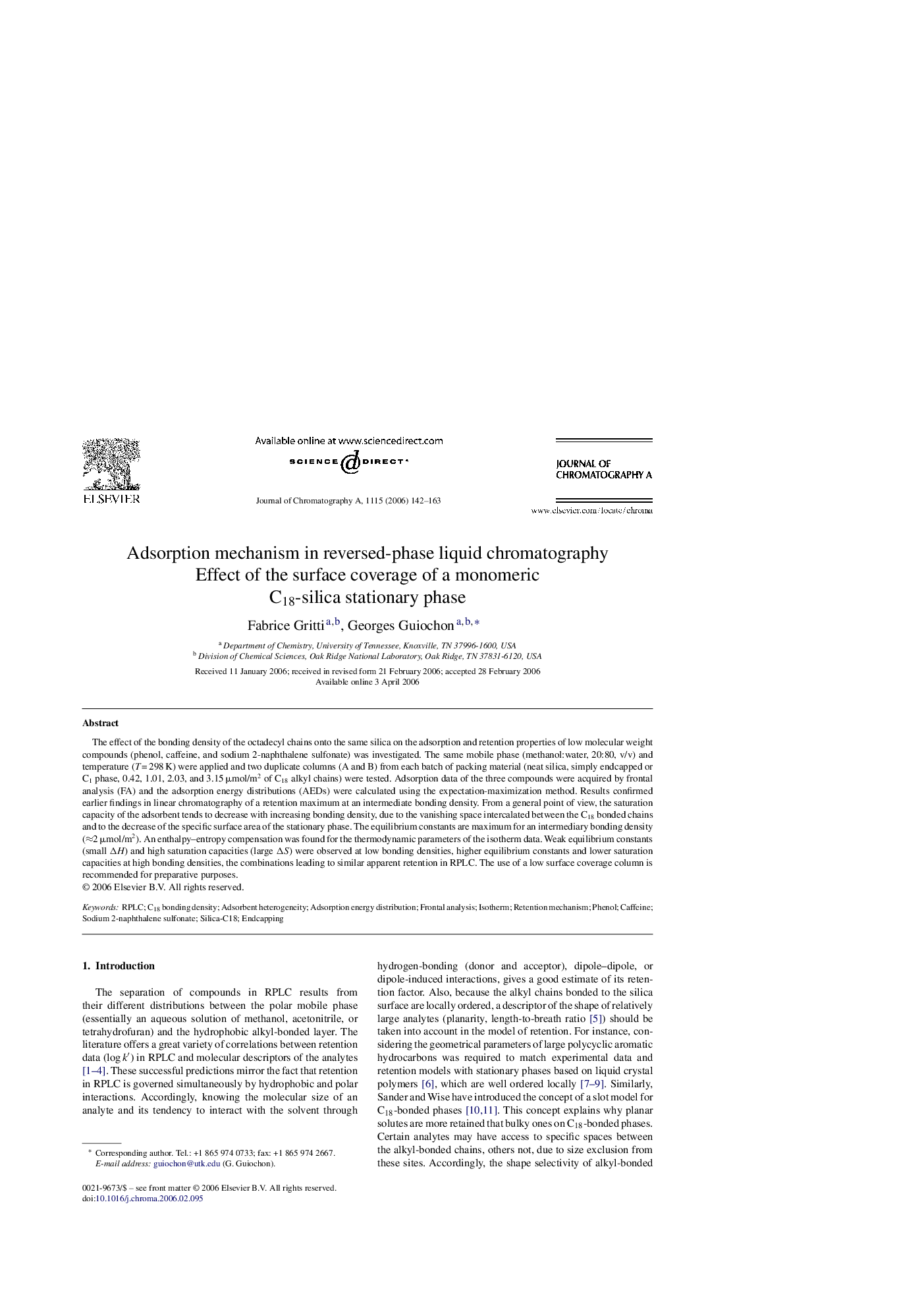| Article ID | Journal | Published Year | Pages | File Type |
|---|---|---|---|---|
| 1209700 | Journal of Chromatography A | 2006 | 22 Pages |
The effect of the bonding density of the octadecyl chains onto the same silica on the adsorption and retention properties of low molecular weight compounds (phenol, caffeine, and sodium 2-naphthalene sulfonate) was investigated. The same mobile phase (methanol:water, 20:80, v/v) and temperature (T = 298 K) were applied and two duplicate columns (A and B) from each batch of packing material (neat silica, simply endcapped or C1 phase, 0.42, 1.01, 2.03, and 3.15 μmol/m2 of C18 alkyl chains) were tested. Adsorption data of the three compounds were acquired by frontal analysis (FA) and the adsorption energy distributions (AEDs) were calculated using the expectation-maximization method. Results confirmed earlier findings in linear chromatography of a retention maximum at an intermediate bonding density. From a general point of view, the saturation capacity of the adsorbent tends to decrease with increasing bonding density, due to the vanishing space intercalated between the C18 bonded chains and to the decrease of the specific surface area of the stationary phase. The equilibrium constants are maximum for an intermediary bonding density (≈2 μmol/m2). An enthalpy–entropy compensation was found for the thermodynamic parameters of the isotherm data. Weak equilibrium constants (small ΔH) and high saturation capacities (large ΔS) were observed at low bonding densities, higher equilibrium constants and lower saturation capacities at high bonding densities, the combinations leading to similar apparent retention in RPLC. The use of a low surface coverage column is recommended for preparative purposes.
